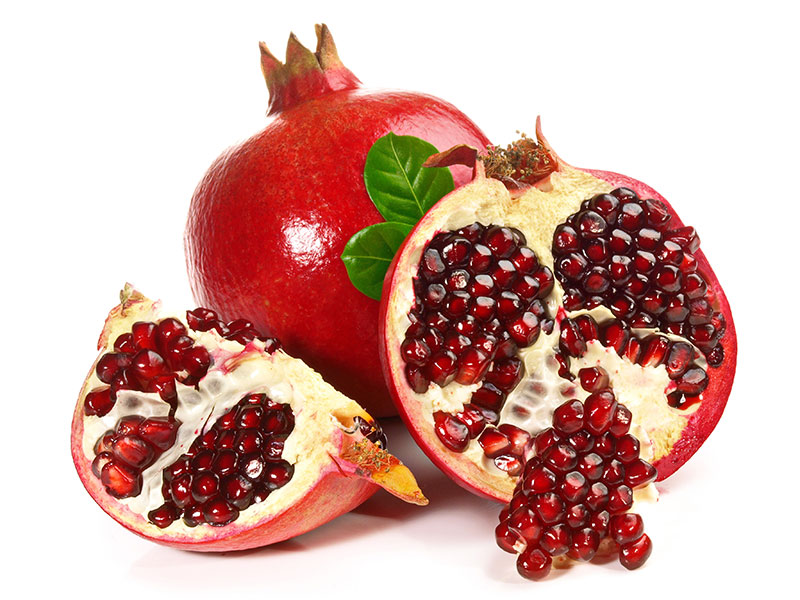
I tend to associate pomegranate with holiday meals, and for good reason. Most of the pomegranate crop grown in the United States comes from California, where the fruits ripen between November and February, filling the fruit bins at your local grocery store to overflowing on through December.
With all that stock available, it’s important to look for good quality fruit. They say that, to pick the best pomegranate, you need to balance it in your hand. Look for a heavy fruit that does not have any puckered skin, which denotes drying that occurs with age. You want to ensure the edible arils hiding inside are as fresh as possible.
Within each pomegranate there are, on average, about 800 bite-sized aril treats yielding close to a half cup of juice. Pomegranates have become popular internet video stars because of the many unique ways people have devised to open them up and release the arils, which can be tricky to do without crushing seeds and wasting juice.
Pomegranate Popularity
We don’t need to wait for holiday eating to enjoy fresh pomegranate these days. Thanks to the marketing group that surrounds pomegranate growers, it came to light a few years ago that these little arils are packed with valuable nutrition. (It helps that the fruit tastes really good, too.) You can now buy pomegranate juiced and even pre-peeled and ready to pop into your mouth like popcorn.
In our shop we use the juice at the end of the year to make some of our specialty drinks. We make use of the high levels of antioxidants and the fact that the fruit is a good source of vitamin C and potassium. The plant’s medicinal history, in fact, dates to ancient times.
A Mythical Fruit
Pomegranate (Punica granatum) is actually a shrub that originated in the Mediterranean region. The plant itself has become inseparable from the mythological stories that demonstrate, as all plants we tell tales about, that it is important to remember.
The pomegranate was the fruit Persephone ate in Hades’ halls, leading to the origin story for our changing seasons. Pomegranate is mentioned in Ayurvedic medicine for fever relief. Greek healing traditions used the flowers to control blood sugar, and the root and bark were used for their astringent nature.
Western medicine has studied the pomegranate and found evidence to suggest it can be used for prostate and skin cancer, osteoarthritis and diabetes. There is also some data that suggests enjoying a glass of pomegranate juice helps our bodies eliminate fat deposits such as those found along vessel walls, preventing heart disease, heart attacks and strokes.
Grow Your Own
In my temperate climate, the shrub can be trained into a small tree and carried outside during the summer. If you don’t live in California or a comparable location in zones 8-10, you can try growing a pomegranate shrub in a pot.
Pomegranate plants like full sun and temperatures above 40 degrees, but they don’t prefer humidity, so keep that in mind when selecting an indoor location. They like to be deeply watered in well-drained soil—no wet feet please—and thrive when given a balanced fertilizer. I use compost tea, which can be applied at the beginning and end of the fruiting season.
If you play your cards right, you might get to watch your very own pomegranate ripen. It takes two to three years for the shrub to fruit and five to seven months for an individual fruit to develop. That’s a bit of a wait, but it’s worth it for the bragging rights.




